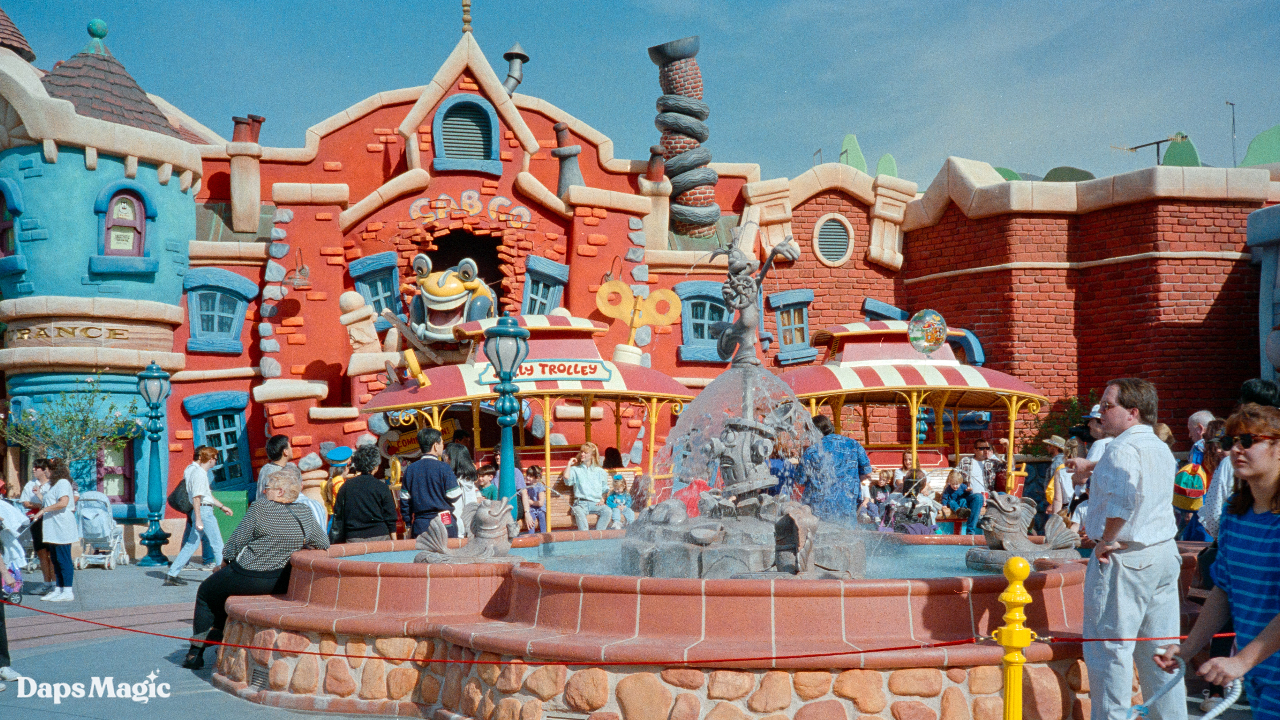Last month we looked at the grand opening of Mickey’s Toontown, January 25th, 1993. Or the 24th. Or 26th. This month I anticipated writing up a complete tour of the new land, but after going through the many, many photos that I took that day, I decided to present Toontown over two months. This month we will look at “downtown” Toontown and the municipal center. Next month we will visit the suburban homes of Goofy, Donald, Chip ’n Dale and, of course, Mickey and Minnie Mouse.
It should be noted that the addition of Mickey’s Toontown was the first new land for Disneyland since New Orleans Square was dedicated by Walt Disney himself in July of 1966. It would be the last until Star Wars: Galaxy’s Edge in May, 2019.
Mickey’s Toontown is divided, somewhat, between three areas: downtown, the municipal center, and the suburbs. As you enter the land, passing under the Disneyland Railroad, you find yourself approaching the downtown section.



The boundaries of this area are marked by the Five and Dime to the west (left), and Roger Rabbit’s Car Toon Spin to the east (right). That attraction was not yet available to the public on opening day; it would be given its own dedication a year after the rest of Mickey’s Toontown.

Toontown offered every service a toon could need: post office, fire department, shops, and even one they did not need: insurance. You can’t harm a toon, so the Toontown insurance agency was out of business!

Next door, further east, was the tantalizing facade of the Toontown cab company, with doors closed and locked. In the foreground can be seen the tracks of the Jolly Trolley.
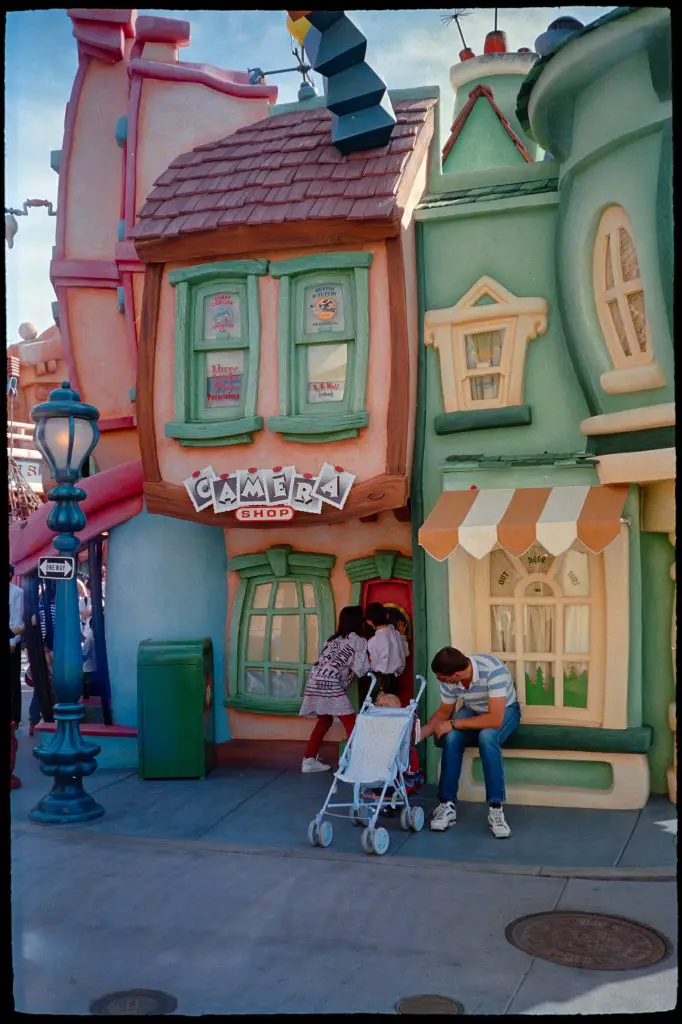
Other services in Toontown included the camera shop. Many of the buildings included an interactive feature. Ring this doorbell, and the lens built into the front door would flash! Upstairs can be seen painted windows for the offices of the Chinny Chin Chin Construction Company (run by the Three Little Pigs), and Huffin & Puffin Wrecking Company (owned by B. B. Wolf, retired).



Out on the street everything was either interactive or whimsically themed. The Toon Crossing sign warned of scurrying brooms; stepping on the toonhole cover would bring shouted admonitions. And, it appears, someone has gotten a bit too enthusiastic at Horace Horsecollar’s Gym.
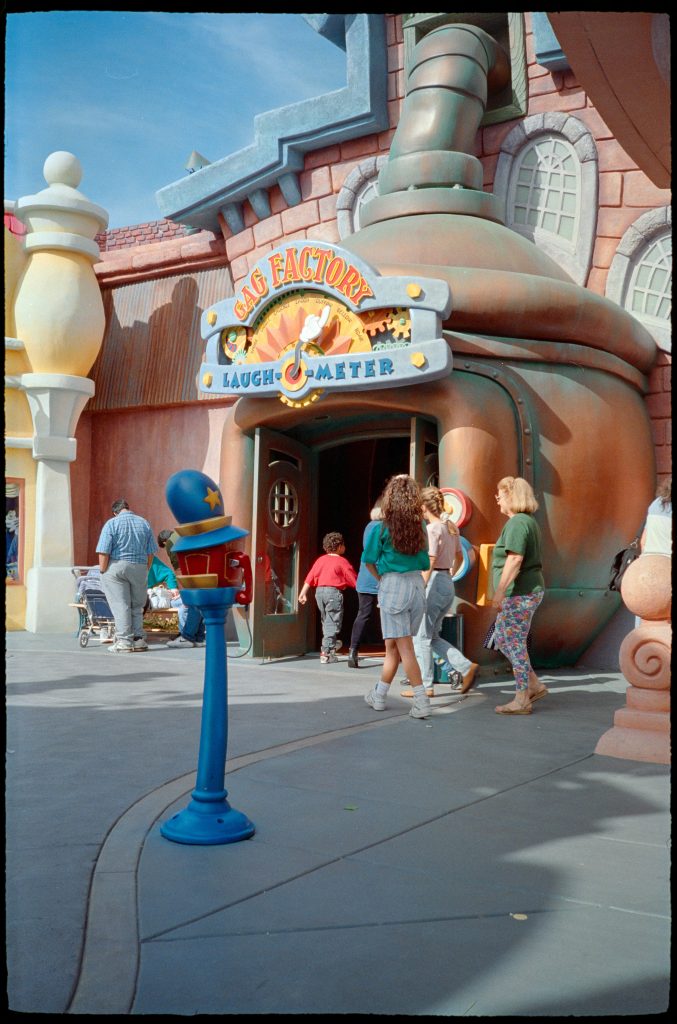
Near the back of Toontown’s business district was the entrance to the Gag Factory (not to be confused with the Gag Warehouse, a couple of doors away). The Gag Factory was Toontown’s largest shopping emporium, and was also accessible through the Five and Dime.


Guests who looked up from the merchandise offering in the Gag Factory would find shelves crammed with all the sorts of gags that a toon might need. And adding animation to the scene, the Gag-O-Matic sputtered along in the center of the room. From one side, gloved hands entered the device, and emerged from the other side bearing such iconic toon items as banana peels, whoopee cushions, squirting flowers, and rubber chickens.
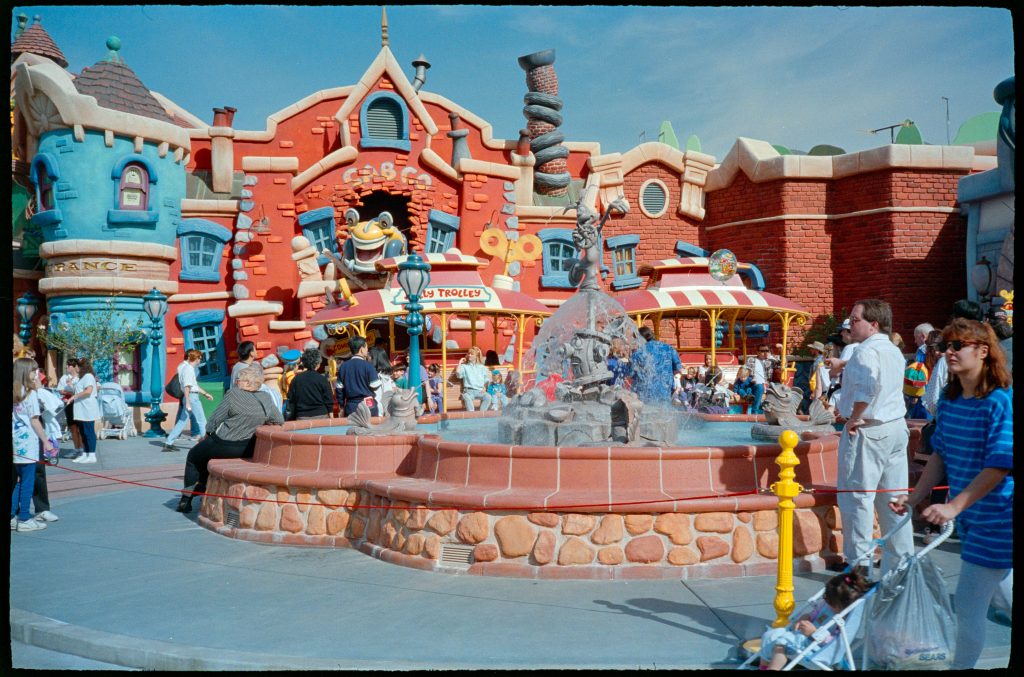
Anchoring the eastern end of the town was a fountain dedicated to Disney’s newest star, Roger Rabbit. Since Mickey’s Toontown was largely inspired by the feature film Who Framed Roger Rabbit, it seemed fitting. And there was a second fountain in town, down at the other end of the trolley line.
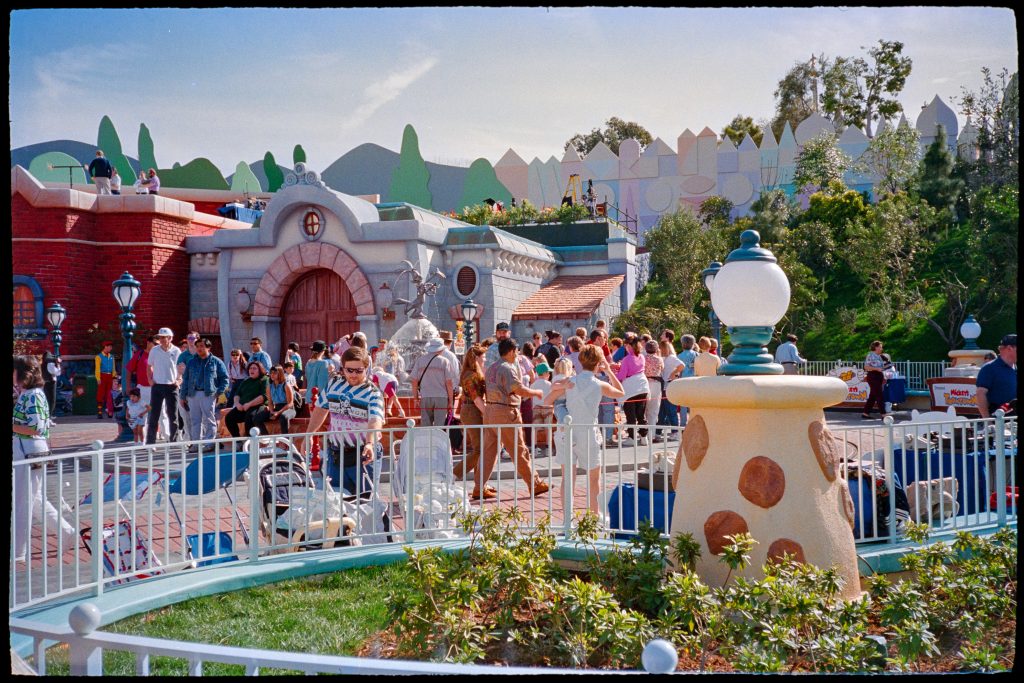
On that long ago opening day, one could find a now hidden architectural feature at the furthest end of Toontown, all the way to the east. Just beyond the Cab Company was the car barn that housed the Jolly Trolleys when they were not in use. Above that was an unusual mural that served to temporarily mask an unsightly problem. You see, Toontown was located right next door to the large show building that housed it’s a small world. And the front end (to the right of this photo) was dimensional scenery, recently painted in vivid pastels. To hide the transition from Toontown to small world, the designers created a “Toontown version” of the small world facade, and dovetailed it into the Toontown hills and trees that rose behind the rest of downtown. Over the years, the trees in this area eventually grew high enough to provide their own masking, and the entire mural was painted green to blend in.
Look carefully and you can see another short lived feature of this area— camera positions and crews on the roofs of the buildings. This was a perfect vantage point to shoot the full length of Toontown from above.
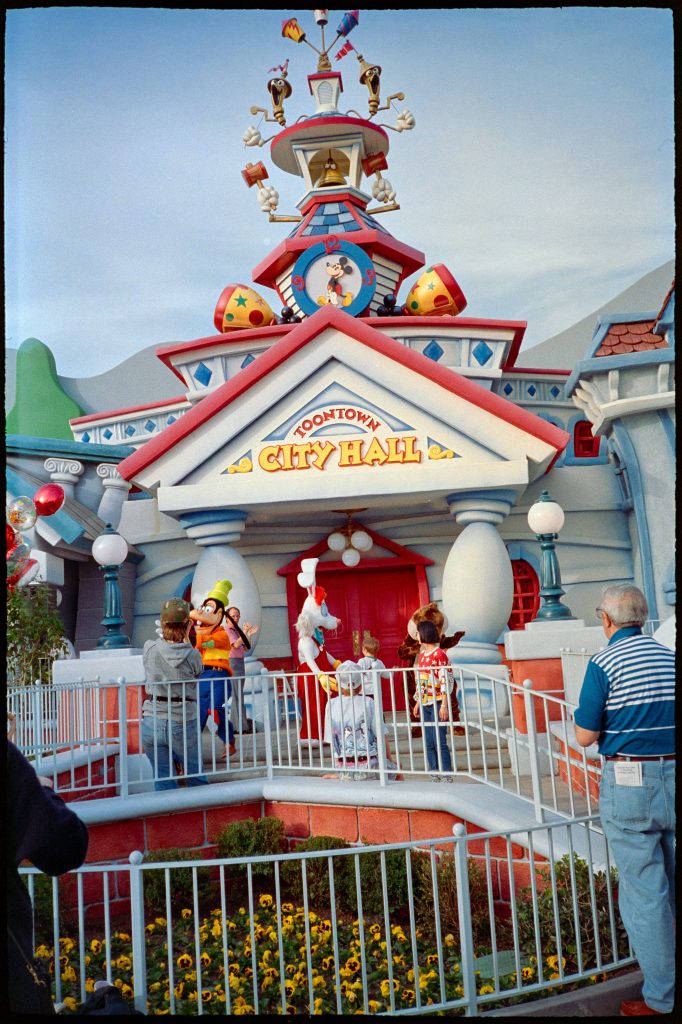
To the west of downtown was the Toontown municipal center, anchored by City Hall. It was surrounded by all the civic buildings needed for a smoothly functioning city. Or at least, the toon versions of a functioning bureaucracy.

Next door to City Hall was the courthouse. Note the official seal of Toontown over the door. And yes, it’s a seal. The building squeezing in at the right is the Department of Street Repairs.
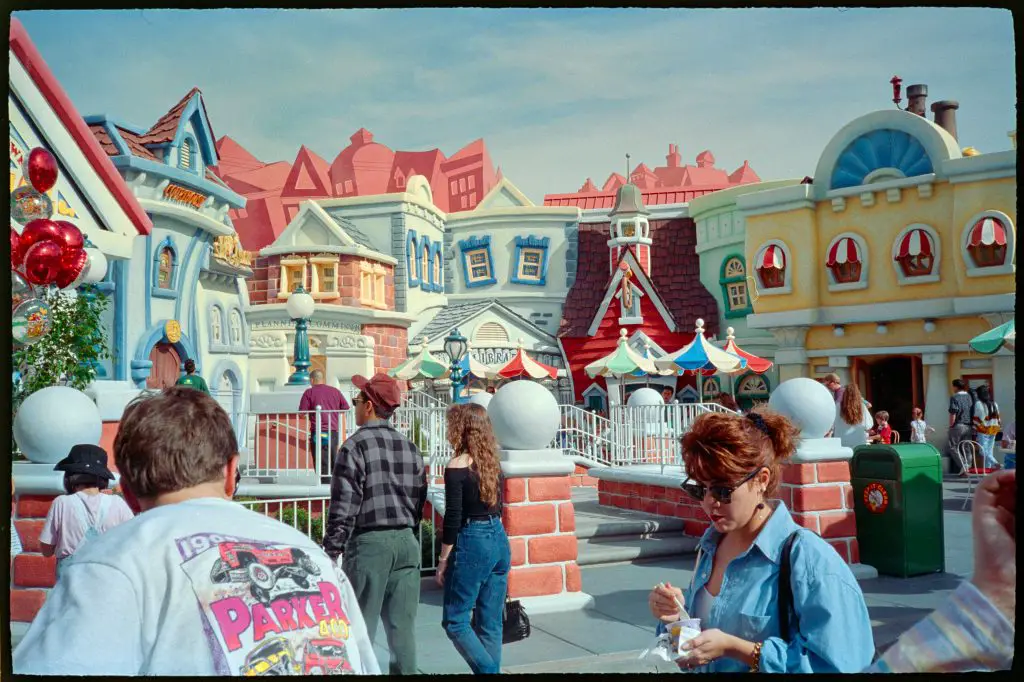
Continuing down the line one can find the Planning Commission, Library and little red Schoolhouse.

Here’s a closer look at that Planning Commission building. You may also note the window just beyond, over the library.
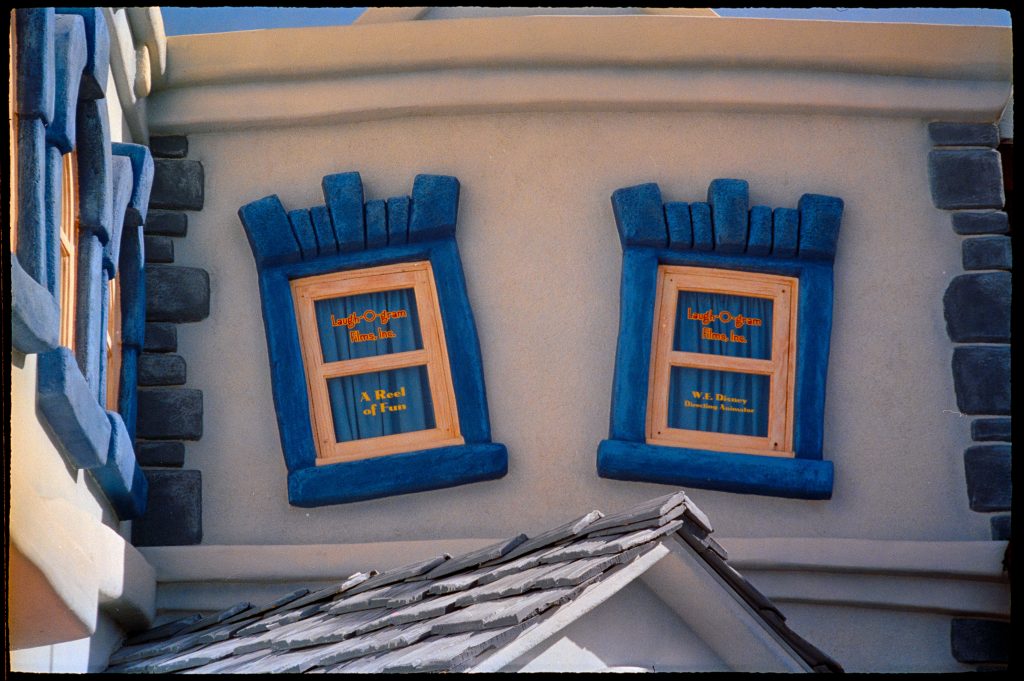
This was one of a pair of windows that offered a tribute to the true founder of Mickey’s Toontown, Walt Disney. The window on the left reads: Laugh-O-Gram Films, Inc./A Reel of Fun. The one to the right: Laugh-O-Gram Films, Inc./W. E. Disney. Directing Animator. Laugh-O-Gram was the real film company that Walt founded in Kansas City, before he made the move to Hollywood in 1923.
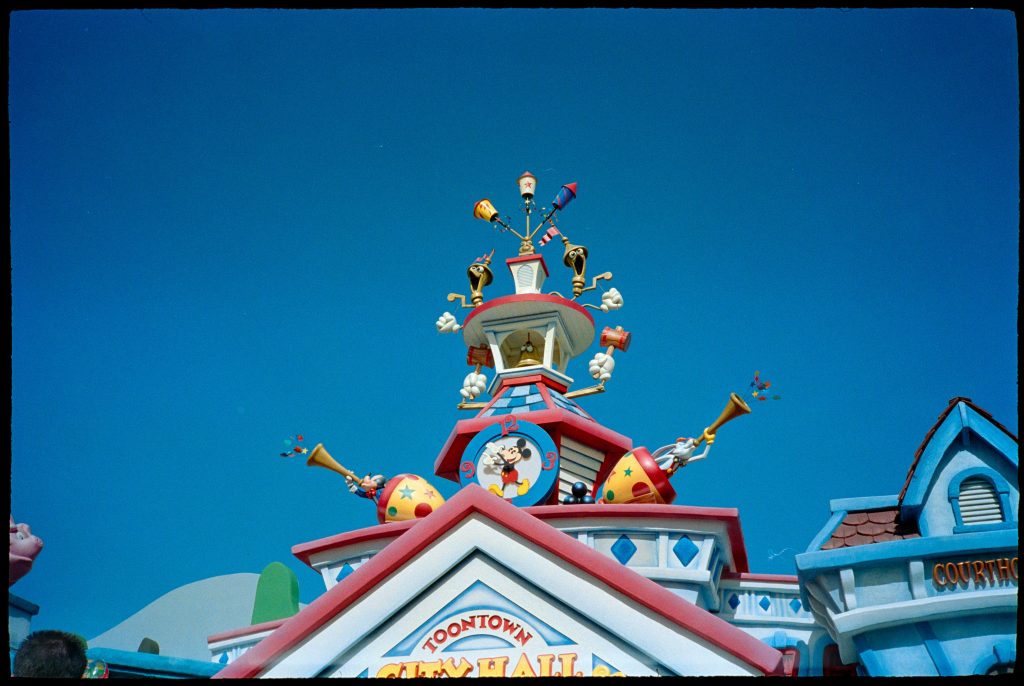
Most City Halls have a clock tower. Toontown City Hall has a Clockenspiel, which is whimsically animated every quarter hour. (What else would you expect?)
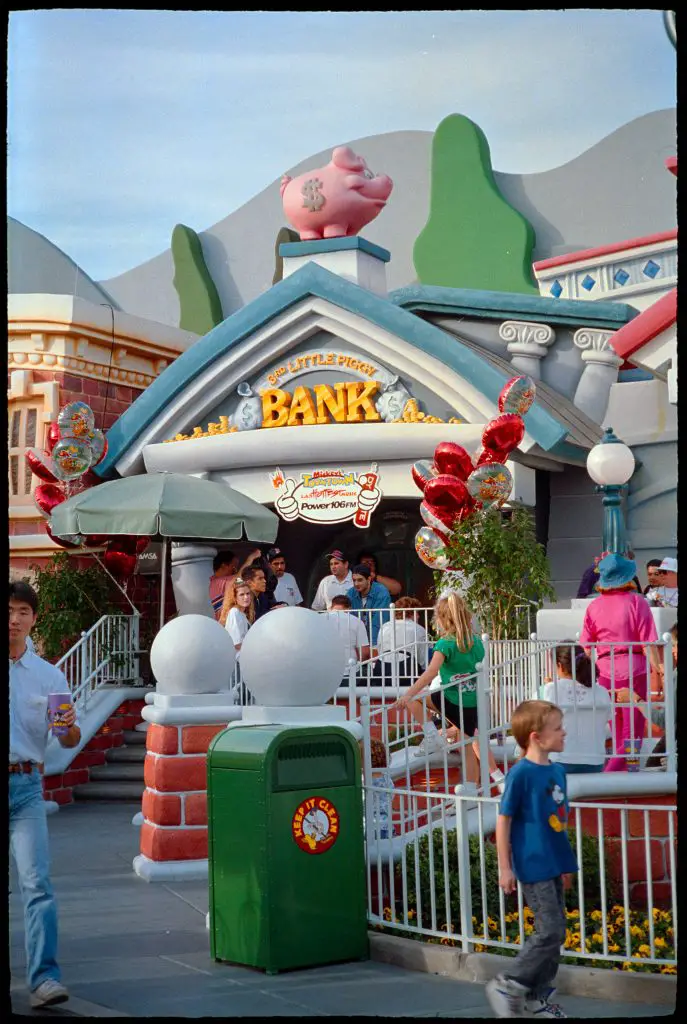
Moving west from City Hall, one finds the Third Little Piggy Bank.
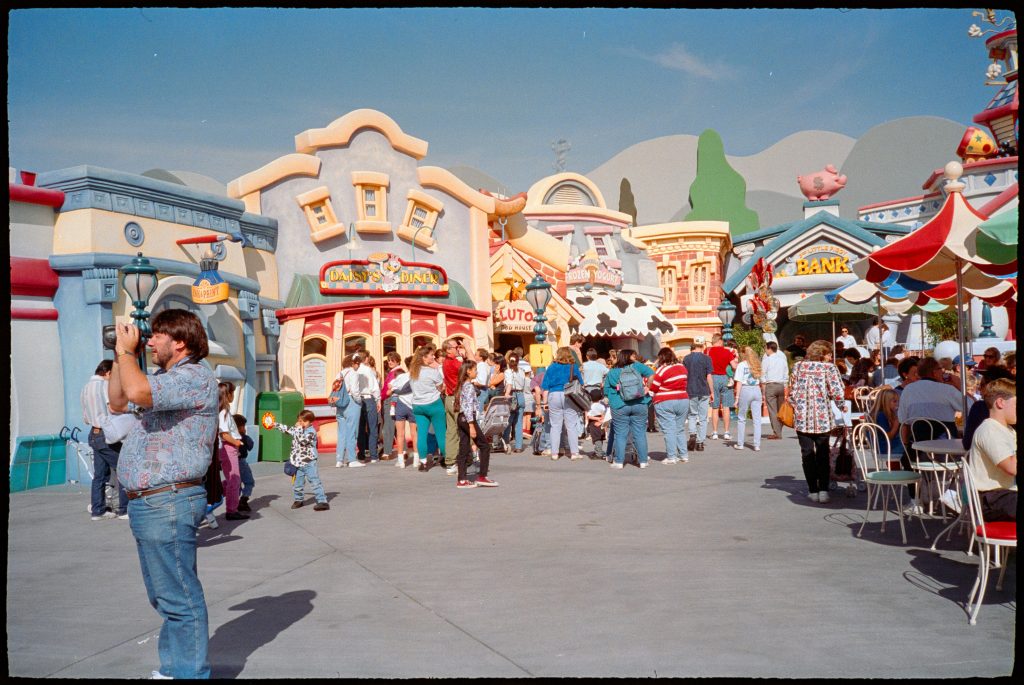
That bank is conveniently placed, as the next row of buildings constitute Toontown’s “restaurant row.” Guests could choose among three offerings: Daisy’s Diner (for pizza), Pluto’s Dog House (for hot dogs), and Clarabelle’s Frozen Yogurt (for… you know.)
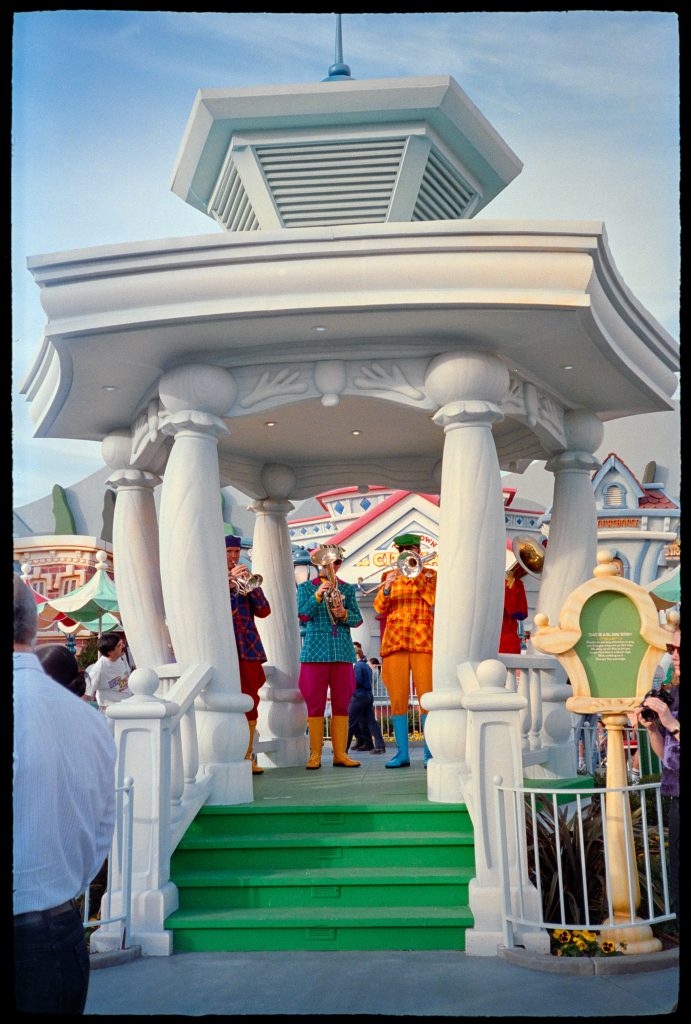
Out in the middle of all this was a bandstand. With a band. At least, there was a band on opening day.
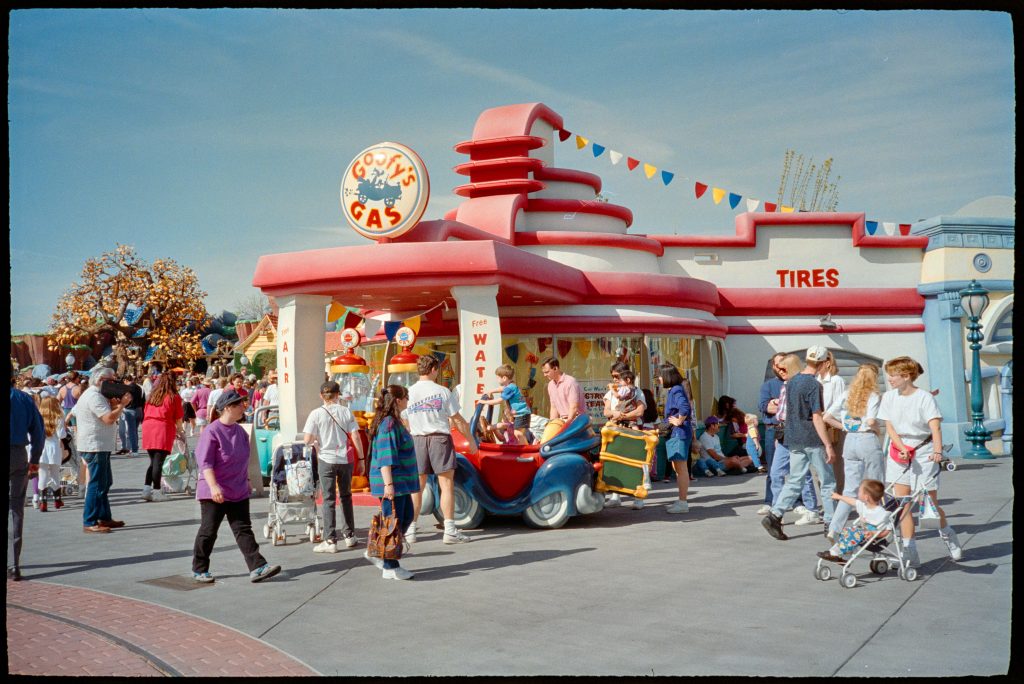
Anchoring the municipal center, and marking the edge of the suburban end of Mickey’s Toontown, was Goofy’s Gas. The Goof offered free air, free water, and (most importantly), free restrooms.
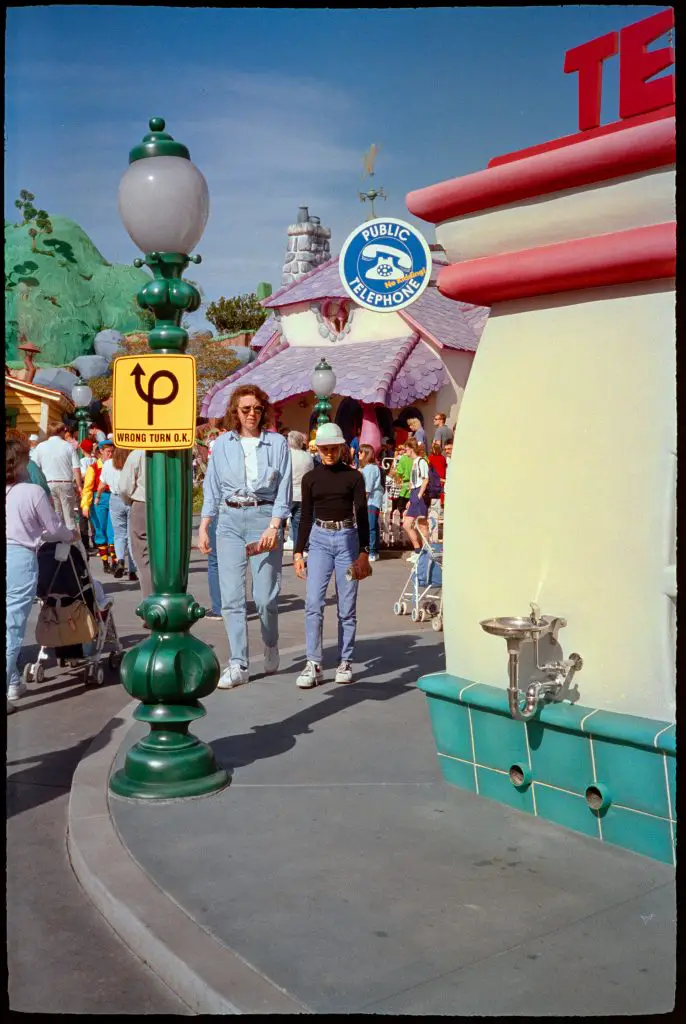
Goofy’s Gas also had public telephones, which were kind of a necessity in those pre-cell phone days thirty years ago. Hence the “No kidding” notice added to the sign.

And here we end this month’s visit to Mickey’s Toontown. Next month: the suburbs.

